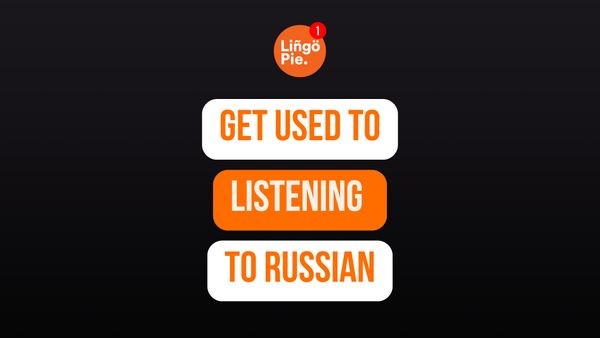Did you know that Russian is the eighth most spoken language in the world? Learning Russian, from the Cyrillic alphabet to its complex grammar, can feel daunting. However, whether you dream of conversing with locals, reading Tolstoy in the original, or expanding your linguistic horizons, the rewards are immense. This guide provides essential tips and strategies on How To Learn Russian Quickly and effectively.
Immerse Yourself in the Sounds of Russian
While Russian pronunciation may sound unfamiliar to English speakers, it’s surprisingly consistent. Each letter generally corresponds to a single sound, unlike the multiple pronunciations of English vowels. Familiarizing yourself with the sounds of Russian is a crucial first step.
Listen Actively
Expose yourself to the rhythm and intonation of the language through music, podcasts, and audiobooks. Even passive listening can train your ear to distinguish sounds and patterns.
Watch Russian TV with Subtitles
Combine listening and reading by watching Russian TV shows and movies with subtitles. Start with English subtitles, then gradually transition to Russian subtitles as your comprehension improves. Platforms like Lingopie offer dual subtitles and clickable translations for unfamiliar words.
Build a Strong Foundation: Vocabulary and Alphabet
Mastering the Cyrillic alphabet and building a solid vocabulary are essential for rapid progress.
Conquer the Cyrillic Alphabet
While seemingly intimidating, the 33-letter Cyrillic alphabet contains several letters identical to their Latin counterparts. Focus on mastering the unique characters and their corresponding sounds. Utilizing flashcards and writing practice can accelerate this process.
Expand Your Vocabulary Strategically
Focus on learning high-frequency words and phrases relevant to your interests and goals. Utilize flashcards, spaced repetition software (SRS), and vocabulary lists organized by themes (e.g., travel, food, greetings).
| Russian Script | Transliteration | English |
|---|---|---|
| Привет | Privet | Hello |
| Спасибо | Spasibo | Thank you |
| Извините | Izvinite | Excuse me |








Practice Makes Perfect: Active Learning Techniques
Passive learning alone is insufficient. Actively engage with the language to accelerate your progress.
Speak Russian Out Loud
Don’t be afraid to practice speaking, even if you’re alone. This helps build confidence and improves pronunciation. Record yourself and listen back to identify areas for improvement.
Find a Language Partner
Converse with native speakers through language exchange programs, online platforms, or local meetups. This provides invaluable practice and exposes you to authentic language usage.
Don’t Neglect Reading and Writing
Read simple Russian texts, such as children’s books or news articles, and practice writing in Cyrillic. This reinforces vocabulary and grammar concepts.
Embrace Immersion and Cultural Exploration
Immerse yourself in Russian culture to enhance your learning experience and motivation.
Travel to Russia (If Possible)
Immerse yourself completely in the language and culture by visiting Russia. This provides unparalleled opportunities for practice and cultural understanding.
Explore Russian Culture
Engage with Russian literature, music, film, and art. This provides valuable context and reinforces your language skills. Learning about Russian traditions and customs can also deepen your understanding.
Simplify Grammar Initially
While Russian grammar is complex, don’t let it overwhelm you in the early stages. Focus on basic sentence structure and gradually introduce more advanced concepts as you progress.
Start with the Essentials
Master basic grammatical concepts, such as noun genders, verb conjugation, and word order, before delving into more complex topics.
| Grammar Rule | Example | Transliteration |
|---|---|---|
| Nouns have gender | стол (masculine) | stol |
Conclusion: Your Journey to Russian Fluency
Learning Russian quickly requires dedication, consistent effort, and effective strategies. By combining immersion, active learning, and a strategic approach to vocabulary and grammar, you can achieve significant progress in a relatively short time. Remember that consistency is key. Dedicate time each day to practice and immerse yourself in the language.
